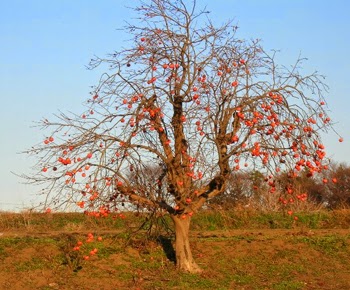< 1. Pro-democracy demonstration of East Germany
in 1989 >
Following the last
article, I investigate the cause of having led the collapse of the Berlin Wall.
This was a
information that apprised people about their being supported by many people,
and it scattered seeds of hope on the their heart.
前回に続いて、ベルリンの壁崩壊を導いた要因を探ります。
それは人々の心に希望の種を撒き、皆に支えられていることを知らしめた情報でした。
< 2. Berlin Wall
construction in 1961 >
< 3. John Paul II >
What gave people a
supportive push?
“All the worker has a right of labor union formation, in
order to protect a social right and human rights. “ Solidarity” is a precious
mental inheritance in not only the Polish people but the world" (summary)
The pope from Poland, at the New Year's
greeting in 1981, blamed it strongly to Poland government for oppressing the
people by the martial law.
Those days, Western countries also
blamed the high-handed policy of East European country’s government.
Christianity was ardently believed by
people in East Europe and East Germany.
And the church had taken sides with the
people and came to strongly request a conversation to the government.
In East Germany too,
from about 1982, a peaceful march was performed at the church in Leipzig every
week.
And in first, the march
that had begun at about 100 people became 200,000 people and spread in the
whole country.
何が人々の背中を推したのか?
「すべての勤労者は、社会的権利と人権を守る為に、労働組合結成の権利を有する。「連帯」はポーランド国民だけでなく、世界の貴重な精神遺産である」(要約)
81年、ポーランド出身のローマ教皇が新年の挨拶で、戒厳令で国民を抑圧するポーランド政府に対し、これを強く非難した。
当時、西側諸国も東欧諸国政府の高圧的な政策を非難していた。
東欧や東ドイツはキリスト教が篤く信仰されており、その教会が国民の側に立ち、政府に対話を強く要請するようになっていた。
東ドイツでも、82年頃から、ライプチヒの教会で毎週、平和行進が行われ、百名程で始まったものが、最後には20万人規模になり、全土に広がった。

< 4. a movie film of Katyn massacre >
In addition, by Gorbachev's information
disclosure, some truths of the past disgusting incident in which the Soviet
Union or communism system were concerned came to light.
And the history was reviewed, and the
people had confidence in the direction of their aim at increasingly.
However, biggest thing that influenced
people was probably that the people have shared the wave of East European
democratization, and first-hand information from Western Europe.
In Hungary, people’s
trip to Europe was liberalized completely in the beginning of 1988.
In East Germany, the
television broadcasting from West Germany could be easily received from long
ago, and acquisition of foreign newspapers or books was also easy.
In Romania, in order to restrict the
information, the duty of the possession report of a typewriter had been
imposed, but it could not interrupt the wave.
In this way, the wave had spread to
Poland, Hungary, East Germany, Czechoslovakia, and Romania in no time.
またゴルバチョフの情報公開により、ソ連や共産体制が関わった過去の忌まわしい事件の真相が明るみに出て歴史が見直され、益々、人々は目指す方向に自信を持った。
しかしおそらく最も大きな影響を与えたのは、西欧の生の情報と東欧の民主化の波を、人々が共有出来たことだった。
ハンガリーでは、88年初めに、西欧への旅行が全面的に自由化された。
東ドイツでは、以前から西ドイツのテレビ放送を簡単に受信出来、外国の新聞や本の入手も容易になっていた。
ルーマニアでは情報を制限する為に、タイプライターの保有届けを義務づけていたが、その波を遮ることは出来なかった。
こうしてポーランド、ハンガリー、東ドイツ、チェコスロバキア、ルーマニアへと燎原の火のように気運は高まった。
< 5. People of East Germany traversing a Hungary
border >
What was the last
push?
In September 1989, Hungary government
permitted the departure to Austria East German citizens asking for exile.
Thereby, a lot of East
German citizens flowed into West Germany through both countries.
At this time, the wall of East-West
division came to make no sense.
In East Germany, although there had been
a quiet movement asking for their freedom from long ago, the demonstrations
expanded at a stretch.
In October,
Gorbachev who had visited to the East Germany encouraged the democracy movement
of the people, in disregard of embarrassment of the East Germany government.
The government collapsed and the Berlin
Wall was destroyed by citizens on November 9.
最後の一撃は何だったのか?
89年9月、ハンガリーは亡命を求める東ドイツ国民に、西欧のオーストリアへの出国を解禁した。
これにより、大量の東ドイツ国民は両国を経由して、西ドイツに流れ込んだ。
この瞬間、東西分断の壁は意味を成さなくなった。
東ドイツでは、以前から自由と統一を求める静かな運動はあったが、一気にデモが拡大した。
10月、来訪していたゴルバチョフは、東ドイツ政府の困惑をよそに、国民の民主化運動を激励した。
さしもの政府も瓦解し、11月9日、壁は市民によって破壊された。
Summary
As crossing a border,
the first-hand information that was transmitted by the exchange of economy or
people taught the truth to the people, and also the support from abroad gave
them courage.
In this way, the
liberalization and the democratization that seemed to be impossibility became
possible without bloodshed depending on the courage and the wise decision of
many people aiming at the reform.
まとめ
国境を越え、経済や人々の交流、生きた情報が人々に真実を知らせ、さらに国外からの支援が彼らに勇気を与えた。
こうして不可能と思われた自由化と民主化は、改革を目指した多くの人々の勇気と英断により、無血で起こりえたのです。






























